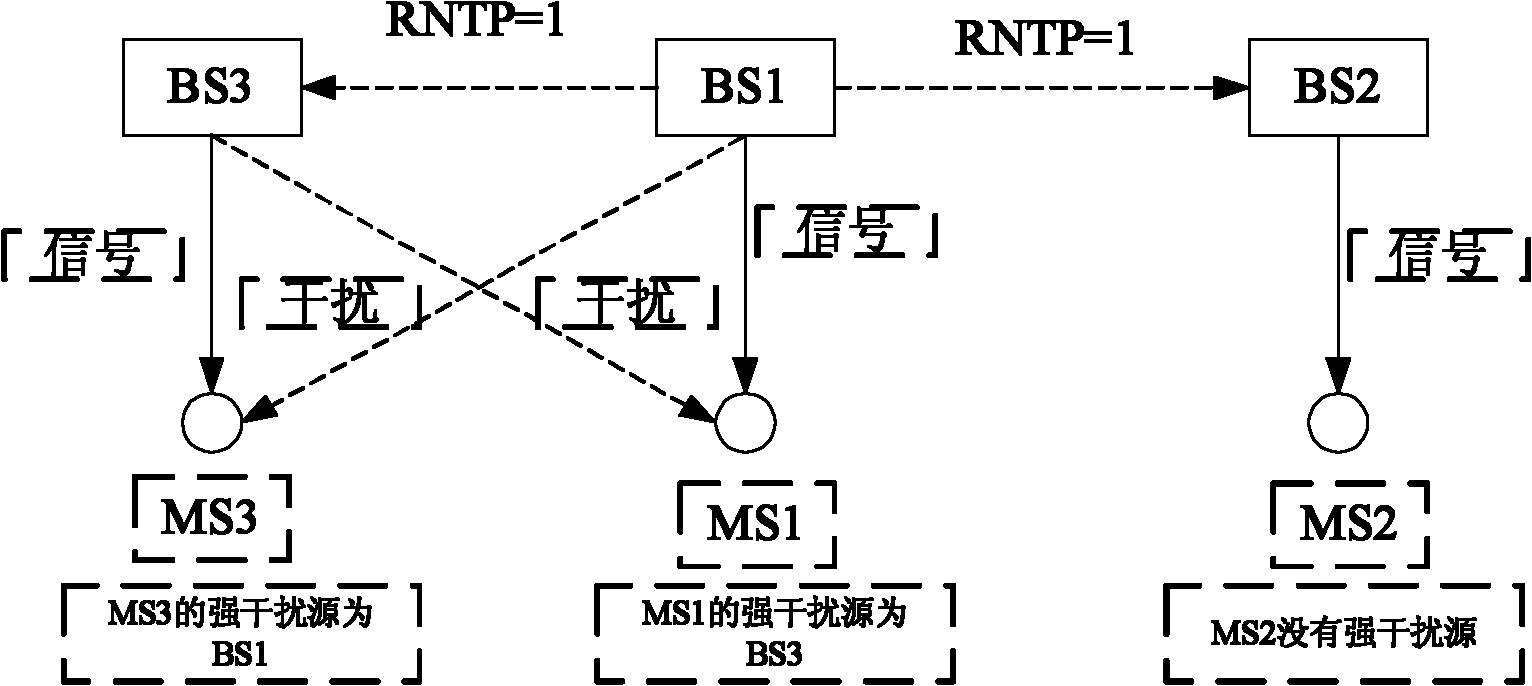Scheduling method and device
A scheduling method and a technology of a scheduling device, which are applied in the field of communication, can solve problems such as reducing resource utilization, and achieve the effect of saving resources
- Summary
- Abstract
- Description
- Claims
- Application Information
AI Technical Summary
Problems solved by technology
Method used
Image
Examples
Embodiment 1
[0057] In this preferred embodiment, the adjacent base stations of BS1 are BS2 and BS3, and the available downlink resources of BS1 are 50 RBs (RB1, RB2, ..., RB50). The serving base station of MS1 is BS1 and the strong interference source is BS3, the serving base station of MS2 is BS2 and has no strong interference source, and the serving base station of MS3 is BS3 and the strong interference source is BS1.
[0058] BS1 completes the allocation of user resources in the cell, and allocates the resources of RB1 to MS1. Among them, MS1 is a cell edge user, and BS1 needs to use a high-power carrier to send data to it;
[0059] BS1 sends RNTP signaling to BS2 and BS3 to indicate the level of carrier transmit power on each RB. Wherein, "0" indicates that the transmission power of the RB is low, and "1" indicates that the transmission power of the RB is high. In this preferred implementation, assuming that only RB1 uses high-power transmission, the format of the RNTP signaling is ...
Embodiment 2
[0065] In this preferred embodiment, the adjacent base stations of BS1 are BS2 and BS3, and the available downlink resources of BS1 are 50 RBs (RB1, RB2, ..., RB50). The serving base station of MS1 is BS1 and the strong interference source is BS3, the serving base station of MS2 is BS2 and has no strong interference source, and the serving base station of MS3 is BS3 and the strong interference source is BS1.
[0066] BS1 completes the allocation of user resources in the cell, and allocates the resources of RB1 to MS1. Among them, MS1 is a cell edge user, and BS1 needs to use a high-power carrier to send data to it;
[0067] BS1, BS2 and BS3 pre-define an RNTP sending rule and receiving method;
[0068] BS1 sends RNTP signaling twice consecutively to BS2 and BS3; wherein, the first RNTP signaling is used to indicate the level of carrier transmit power on each RB of the base station. Wherein, "0" indicates that the transmission power of the RB is low, and "1" indicates that th...
PUM
 Login to View More
Login to View More Abstract
Description
Claims
Application Information
 Login to View More
Login to View More - R&D
- Intellectual Property
- Life Sciences
- Materials
- Tech Scout
- Unparalleled Data Quality
- Higher Quality Content
- 60% Fewer Hallucinations
Browse by: Latest US Patents, China's latest patents, Technical Efficacy Thesaurus, Application Domain, Technology Topic, Popular Technical Reports.
© 2025 PatSnap. All rights reserved.Legal|Privacy policy|Modern Slavery Act Transparency Statement|Sitemap|About US| Contact US: help@patsnap.com



